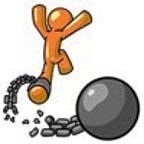In 10 Years, Your School Will Offer CS
Imagine your excitement if you’re a New York teen today.
“De Blasio to Announce 10-Year Deadline to Offer Computer Science to All Students”
Mayor Bill de Blasio will announce on Wednesday that within 10 years all of the city’s public schools will be required to offer computer science to all students.
Offered to them. Ten year. 2025. (Three years after the Singularity?)
Your Honor, here’s a little secret/pro tip:
Computer Science Learning is Free
Free as in beer. Free as in access. Anyone can learn CS at any level. On any phone, tablet, or PC.
Not having “qualified instructors” is certainly no obstacle. If you can read and press buttons, you’re qualified to introduce students to a wealth of computer science and robotics learning:
- Go to Code.org
- Allow the students to learn.
Code.org is set up around basic introductions, but it also points to longer, deeper experiences.
Before you seize a valve re my over-estimation of student’s abilities, or under-estimation of the value of live teachers, hold up. I know. Kids need teachers.
The presser, however, announced that CS will be offered to all students. We can do that now. It might meet all students exactly where they are at now. But regular classrooms don’t always do that, either.
So let’s give the kids that are ready the CS resources that are ready for them today.
Beyond, Code.org, far more resources are available. Want to learn full-stack web development? Check out my semester-length do-it-yourself course for high school students: Web Programming with Ruby-on-Rails. Want a more academic approach to basic CS? Take a MOOC from Stanford.
Scores of free, introductory programming tutorials are available in dozens of places across the web. (Last time I downloaded a development environment, it came with an option for one of three K-12 learn-to-code packages).
In particular, Scratch, begun in 2003 at MIT’s Lifelong Kindergarten Project, has taught kids all over the world. It uses simple connected shapes like these:
The different shapes represent different CS concepts. The app engine only allows workable shapes to connect. Over 10 million projects have been created on the Scratch app. Many other apps (including Tynker and Code.org’s Blockly) use similar approaches.
As students advance, so do the available opportunities. C2SN, from Carnegie-Mellon’s Robotics academy offers a number of ways to interact with robots both physical and virtual.
All of these give teachers and parents plenty of support in getting the young person started.
Even more online training is available as skills advance even more: CodeSchool, CodeAcademy, Lynda.com, Treehouse.com,…they go on.
What’s more, this type of learning is extending beyond just computer science. Just take a look at the physics learning at Khan Academy, CK-12, and more.
Hizzoner clearly realizes a fairly old truth about our schools and 21stC learning. Now it’s time to recognize the world has already leaped way ahead.
